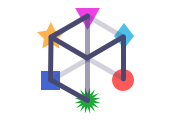This week was spent gearing up for Playtest Day, an ETC event that invites the general public to the building to playtest experiences. The Saturday event served as our next major milestone, as there was much that we wanted to add and test during the event. We spent a portion of the previous week developing a new and more fleshed out version of our iteration, which we storyboarded all of the major steps for. This week’s sprint goal was to build out the experience, link the separate parts, and test and end to end experience by Saturday.
From playtest day, we learned that guests easily relate size to importance when it comes to interface elements. We also found that guests were confused with how to interact with the world, even when language and phrases were there to guide them. Moving forward, we will try for another revision of the language.
We also found that the timing of the reveal stage was entirely too long (30 seconds), which made playtesters assume the experience was broken. Additionally, participants could not infer much of the data visualization and did not consistently infer the correct information.
Most importantly, we found that playtesters really couldn’t tell much about the particle system used to render the “Other”. This resulted in guests often picking at random or choosing an answer that wasn’t always relevant to the on-screen other, but instead their own preference. The Design team will be meeting in the coming days to remedy this, but the team is already considering making the on screen “Other” as clear as possible to give guests more information to base their assumptions off. This also presents tech with a new challenge: How can we represent the “Other” is the clearest way possible? Because the data we’re using to make the particle system is point-cloud based and not a traditional meshed object, how can we clearly represent the other? These are major hurdles that we will be working towards in the coming week.
